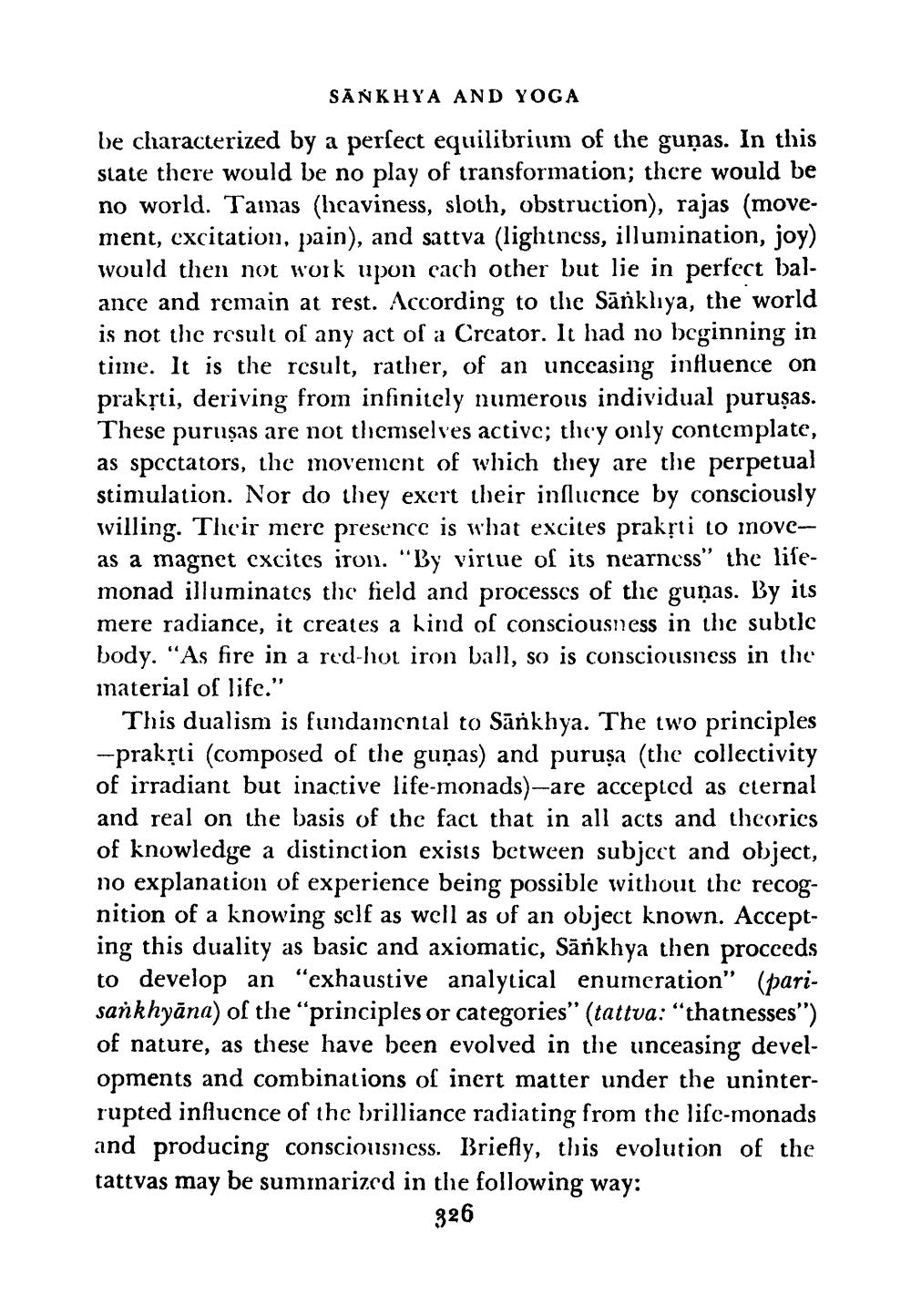________________
SANKHYA AND YOGA be characterized by a perfect equilibrium of the guņas. In this slate there would be no play of transformation; there would be no world. Tamas (heaviness, sloth, obstruction), rajas (movement, excitation, pain), and sattva (lightness, illumination, joy) would then not work upon cach other but lie in perfect bal. ance and remain at rest. According to the Sārklıya, the world is not the result of any act of a Crcator. It had no beginning in time. It is the result, rather, of an unceasing influence on praksti, deriving from infinitely numerous individual purușas. These puruṣas are not themselves active; they only contemplate, as spectators, the movement of which they are the perpetual stimulation. Nor do they exert their influence by consciously willing. Their mere presence is what excites prakrti to moveas a magnet excites iron. “By virtue of its nearness” the lifemonad illuminates the field and processes of the guņas. By its mere radiance, it creates a kind of consciousness in the subtlc body. "As fire in a red-hot iron ball, so is consciousness in the material of life."
This dualism is fundamental to Sānkhya. The two principles -praksti (composed of the guņas) and puruşa (the collectivity of irradiant but inactive life-monads)—are accepted as cternal and real on the basis of the fact that in all acts and theorics of knowledge a distinction exists between subject and object, no explanation of experience being possible without the recognition of a knowing self as well as of an object known. Accepting this duality as basic and axiomatic, Sārkhya then proceeds to develop an “exhaustive analytical enumeration” (parisankhyāna) of the “principles or categories” (tattva: “thatnesses") of nature, as these have been evolved in the unceasing developments and combinations of inert matter under the uninterrupted influence of the brilliance radiating from the lifc-monads and producing consciousness. Briefly, this evolution of the tattvas may be summarized in the following way:
326




